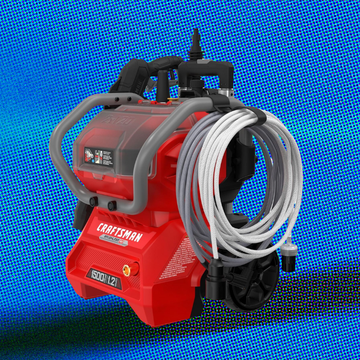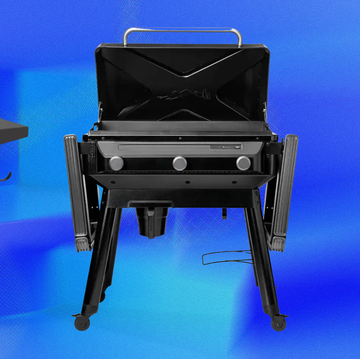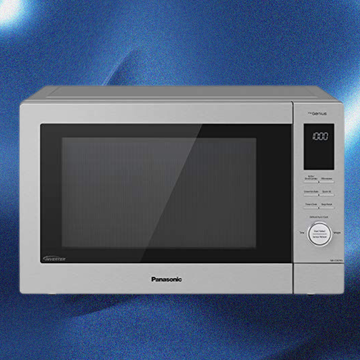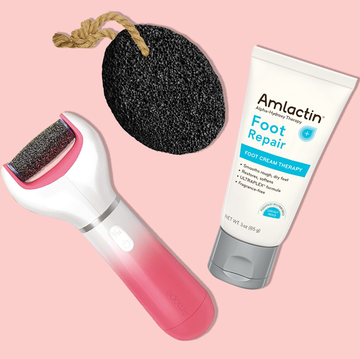Induction stoves are having a moment, and it seems like that moment is here to stay. They're becoming more mainstream as the safety of gas stoves continues to be questioned, and more companies are starting to make them in all sorts of types and sizes.
While induction stoves come with some draws around installation and a learning curve, they offer many advantages over gas and electric stoves, including faster heating, precise temperature control and improved safety features. I've covered induction cooking for years and after seeing first-hand the overwhelming advantages of induction stoves I’m planning to install one in my kitchen remodel later this year.
This year, induction technology took another leap forward with the introduction of products like the Copper Charlie induction stove, which debuted at the 2025 Consumer Electronics Show and eliminates the need for electrical upgrades making induction more accessible than ever.
At the Good Housekeeping Institute, our Kitchen Appliances and Innovation Lab has been rigorously testing ranges for years, evaluating gas ranges, electric stoves and induction models to ensure consumers get the best-performing appliances. We also have a deep understanding of how induction technology works, the pros and cons of buying an induction stove cooktop, and how to optimize your cooktop for the best results. Our Lab rigorously tests induction stoves for performance, ease of use and durability, making sure we provide recommendations that truly serve home cooks.
What is an induction stove?
Unlike gas or traditional electric stoves, induction stoves use electromagnetic technology to heat cookware directly. Instead of heating a burner that then transfers heat to the pot, the cookware itself heats up when the iron particles in the pots and pans come in contact with the induction burners and they're turned on. This results in quicker, more efficient cooking with less wasted energy.
Induction cooking is not a new concept as the technology was introduced at the 1933 World's Fair in Chicago and modern induction cooktops were developed in the 1970s. So no need to worry about induction being a fad or becoming outdated, it is actually being refined each year.
Induction technology is available in several formats:
- Induction stoves and ranges: Full-sized units that can slide into place and include both a stovetop and oven.
- Induction cooktops: Built-in surfaces with multiple burners that are set into a countertop.
- Portable induction cooktops: Compact, single-burner models great for small kitchens or travel.
The pros and cons of induction stoves
Pros
- Faster, more precise cooking: Induction stoves heat pots and pans instantly and offer fine-tuned temperature control that gas and electric stoves struggle to match. I've used them to boil water in nearly half the time of traditional methods.
- Energy efficient: Since induction transfers heat directly to cookware, less energy is wasted, making it more efficient than gas or traditional electric stoves. The only heat you'll feel from the stove is emanating from the pan, not from the surface itself.
- Easy to clean: Induction stoves have a smooth glass surface which makes them extremely easy to clean after use. Once the surface has cooled from any residual heat left from the pan, use a damp soft cloth to wipe it down.
- Safer for families: With no open flame or exposed hot coils, induction stoves reduce the risk of burns. However, surfaces can still retain residual heat from cookware, so for safety reasons treat an induction cooktop as you would any other hot appliance.
- Improved indoor air quality: Another advantage of no open flame is that induction stoves do not add indoor air pollutants like nitrous oxide or carbon monoxide to your home like a gas stove can. If you are sensitive to air-quality issues, induction cooking is the answer.
- Smart features and connectivity: Some models integrate with Wi-Fi and smart home systems, allowing voice-activated control, automatic range hood activation and auto shut off if water boils over.
Cons
- Learning curve for new users: I'm a die-hard gas cooking enthusiast and I'm accustomed to the audio and visual cues of lighting a stove and adjusting the flame. Induction cooking removes that process and might initially feel like you're cooking with standard electric, but you'll quickly realize how superior induction works as the pot instantly starts to heat to your desired temperature.
- Requires good induction-compatible cookware: You’ll need pots and pans with a magnetic base, such as cast iron or stainless steel. (Test your cookware with a magnet—if it sticks, it’s induction-ready.) Good Housekeeping Institute's Kitchen Appliances and Innovation Lab Director Nicole Papantoniou states, “While switching to induction might require you to switch out your cookware, there’s a good chance your new cookware will last you a long time. Most of the cookware that works best with induction is of higher quality.”
- Higher upfront cost: I always thought induction stoves were a bit out of reach as I was planning my kitchen remodel, but I've noticed prices are now on par with premium electric and gas models. Papantoniou says, “Switching to induction could be pricey, but more brands are making inductions ranges and cooktops now so they're starting to get more affordable”
- Glass surface can scratch: While sleek and easy to clean, induction cooktops can be prone to scratches if cookware is dragged across the surface. Resist the urge to use the surface as a work area and don't store pots and pans on it.
- May require an electrician: Most induction stoves operate at 240 volts, which may require an upgraded electrical circuit, though new models from Copper and Impulse aim to remove this barrier by only needing a standard 120 volt outlet.
What to look for when buying an induction stove
If you’ve decided to make the switch, keep these factors in mind:
- Size and format: Your kitchen design will determine the width of your induction stove with standard sizes being 30 and 36-inches, but wider sizes are available at the higher end.
- Freestanding vs. slide-in: Freestanding models give you the choice of installing between cabinets or can stand alone while a slide-in model is designed to fit seamlessly between cabinets. Most induction stoves will have the controls in the front which gives a more modern look compared to the controls on the back which breaks up the look of a backsplash.
- Burner layout and power levels: Look for models with flexible zones that adjust to different pan sizes. Some high-end models feature "bridge" elements that allow you to heat larger cookware evenly.
- Control type: Decide between touch controls or physical knobs. Some people prefer the tactile feedback of knobs, while others like the modern look of digital touchscreens.
- Smart features: Wi-Fi connectivity allows remote monitoring, voice activation and automatic adjustments. Some stoves can even sync with compatible range hoods to activate ventilation automatically.
- Voltage and electrical requirements: Standard induction stoves will require a 240-volt outlet, which may mean an upgrade to your electrical panel if your home isn't wired for it. The newer models that can be plugged into a standard wall outlet use a built-in battery pack to supplement the lower voltage, but they are still a niche product and much more expensive.
- Safety features: Consider models with auto-shutoff, child lock controls and cookware detection to prevent accidental activation.
- Budget considerations: Entry-level models start around $1,000, while high-end smart induction ranges can exceed $4,000. Be sure to factor in the cost of compatible cookware if you don’t already own it. Good Housekeeping Institute's Home Improvement Director Dan DiClerico echoes Papantoniou's point, saying, "The higher price point has been the biggest barrier to entry, but as costs continue to come down, we’re going to see more shoppers make the switch."
The bottom line: Do you need an induction stove?
The plan for my dream kitchen is to have an induction stove for all of the reasons mentioned above. I'm doing a complete remodel so the cabinets and tile will be off the wall which is the best scenario for adding an upgraded 240 volt outlet. If I was just upgrading my stove, I'd have to weigh the cost of updating the electrical which can vary depending on how close your appliance is to your electrical panel.
If you’re still unsure, ask yourself how induction fits into your cooking habits, kitchen setup and how much you value the health benefits. Some people are choosing to move to induction primarily to improve their indoor air quality with cooking performance being secondary. Ultimately, the decision comes down to balancing cost, convenience and long-term benefits to find what works best for your home.
Why trust Good Housekeeping?
This article is written by Timothy Dahl, a contributing writer for Good Housekeeping, whose expertise spans kitchen appliances, home improvement and smart home technology. He has covered the latest in appliance innovations for publications like Lifehacker, Popular Mechanics and Charles & Hudson. While a longtime advocate for gas cooking, Timothy is incorporating an induction stove into his future kitchen remodel, making him uniquely positioned to weigh the benefits and challenges of this transition.
Nicole Papantoniou, who oversees Good Housekeeping Institute's Kitchen Appliances and Innovation Lab, brings years of expertise in testing and reviewing kitchen appliances. She and her team conduct rigorous hands-on evaluations, ensuring that each product recommendation is backed by real-world performance and expert analysis. She also uses an induction stove in everyday life which is a huge endorsement for this technology, from someone who knows all of the options.
Timothy Dahl is an experienced writer and editor covering home improvement, DIY, and lifestyle topics for nearly 20 years. With a deep background in hands-on testing and reporting, he has reviewed and worked with hundreds of tools, products, and home innovations. Timothy's work has appeared in The New York Times, Wired, and Popular Mechanics, and he's the founder of Charles & Hudson. He specializes in making complex projects accessible and is passionate about empowering homeowners with clear, actionable guidance.
Nicole (she/her) is the director of the Good Housekeeping Institute's Kitchen Appliances and Innovation Lab, where she has overseen content and testing related to kitchen and cooking appliances, tools and gear since 2019. She’s an experienced product tester and recipe creator, trained in classic culinary arts and culinary nutrition. She has worked in test kitchens for small kitchen appliance brands and national magazines, including Family Circle and Ladies’ Home Journal.














